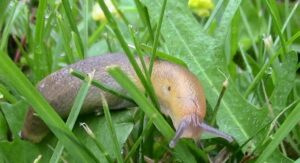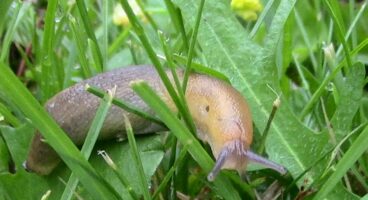Tired of insects and pests eating away at the garden you’ve spent hours of hard work on? Practice companion planting! Farmers have been practicing it for ages, and here at Self Reliance Central we’ve found that it’s simply genius!
Some plants possess the natural ability to repel certain insects. Companion planting is the practice of strategically placing insect-repelling plants next to crops that will benefit from their natural properties. It’s not only an environmentally conscious way of protecting your garden from pests; it also lends your garden beauty (companion flowers) and practicality (companion herbs).
There are all sorts of plant combinations that can make a difference in your garden.
ONIONS scattered throughout the garden keep root maggots from traveling from plant to plant.
MARIGOLDS and other members of the chrysanthemum family planted throughout the garden repel most insects and many weeds.
Aromatic plants such as CHIVES, DILL, THYME, BASIL, OREGANO, and MINT attract valuable pollinators and ward off a great number pests.
PETUNIAS planted next to beans repel bean pests.
Planting HORSERADISH at the corners of a potato patch and planting BEANS nearby repel potato beetles.
SLUGS

Slugs are a big pain! But commercial slug killers are toxic to birds and are less effective after rain, when slugs are most active. And there are more around than you think. For everyone you see, there are probably another 20 out there nibbling on your garden plants. To discourage them, you might want to try these time-honored solutions.
Watering Schedule
Slugs are most active at night and are most efficient in damp conditions. Avoid watering your garden in the evening if you have a slug problem. Water in the morning – the surface soil will be dry by evening. Studies show this can reduce slug damage by 80%.
Beer
Weird but true. Slugs are attracted to beer. Set a small amount of beer in a shallow wide jar buried in the soil up to its neck. Slugs will crawl in and drown. Take the jar lid and prop it up with a small stick so rain won’t dilute the beer. Leave enough space for the slug to enter the trap.
Seaweed
If you can get it, seaweed makes great soil and it’s a natural repellent for slugs. Mulch with seaweed around the base of plants or perimeter of the bed. Pile it on 3″ to 4″ thick – when it dries it will shrink to just an inch or so deep. Seaweed is salty and slugs avoid salt. Push the seaweed away from plant stems so it’s not in direct contact. During hot weather, seaweed will dry and become very rough which also deters the slugs.
Copper
Small strips of copper can be placed around flower pots or raised beds as obstructions for slugs to crawl over. Bend the strips to make a “fence” for the slugs to climb. When crossing the copper, the slugs get a small electrical shock which sends them packing. Keep the copper working with a piece of fine sandpaper.
Diatomaceous Earth
Diatomaceous earth is the sharp remains of microscopic creatures. It is sharp and cuts up soft-bodied pests, causing them to dehydrate. Sprinkle around garden beds or individual plants, or mix with water to make a leaf spray. Buy natural or agricultural grade diatomaceous earth, not pool grade which has smoother edges. Available in garden centers; but quite expensive.
Salt
If all else fails, go out at night with the salt shaker and a flashlight. Look at the plants which have been getting the most damage and inspect the leaves, including the undersides. Sprinkle a bit of salt on the slug and it will kill it quickly. Not particularly pleasant, but use as a last resort.
Overturned Flowerpots, Grapefruit Halves, Board on Ground
Overturned flowerpots, with a stone placed under the rim to tilt it up a bit, will attract slugs. Leave overnight, and you’ll find the slugs inside in the morning. Grapefruit halves work the same way, with the added advantage of the scent of the fruit as bait.
Another trap method, perhaps the simplest of all, is to set a wide board on the ground by the affected area. Slugs will hide under the board by day. Simply flip the board over during the day to reveal the culprits. Black plastic sheeting also works the same way.
Garlic-based slug repellents
Laboratory tests at the University of Newcastle-Upon-Tyne (UK) revealed that a highly refined garlic product (ECOguard produced by ECOspray Ltd, a British company that makes organic pesticides) was an effective slug killer. Look for garlic-based slug deterrents which will be emerging under various brand names, as well as ECOguard.
New caffeine-based slug/snail poisons
In June 2002) the journal Nature reported that slugs and snails are killed when sprayed with a caffeine solution, and that spraying plants with this solution prevents slugs from eating them. The percentage of caffeine required in a spray is greater than what is found in a cup of coffee, so homemade sprays are not effective. Look for new commercial sprays which are caffeine-based. Old-timers also swear by coffee grounds scattered around the base of plants.
